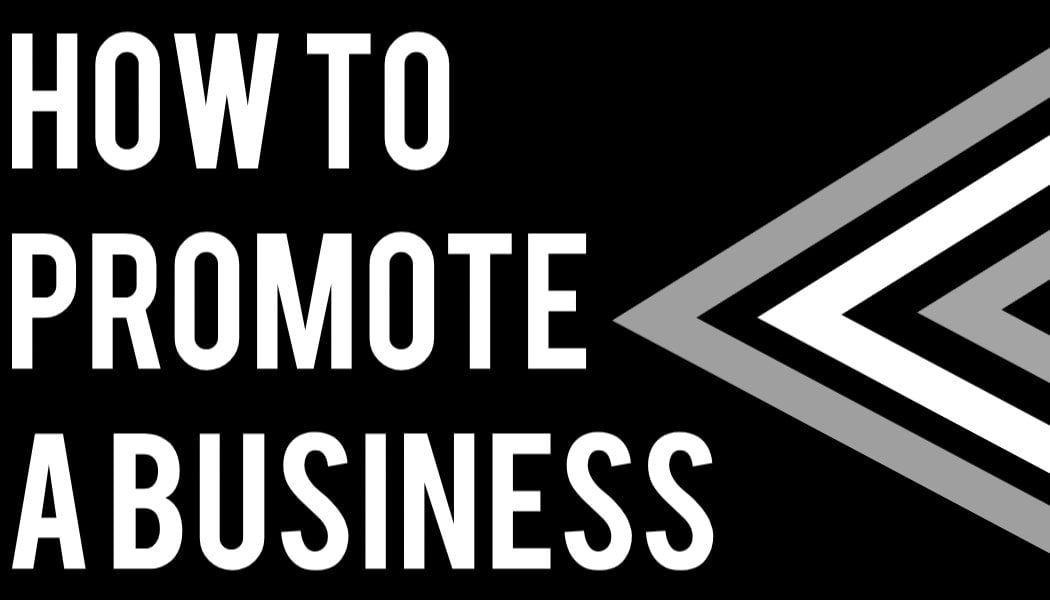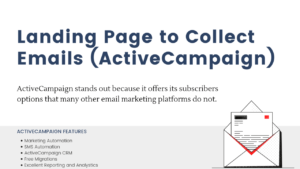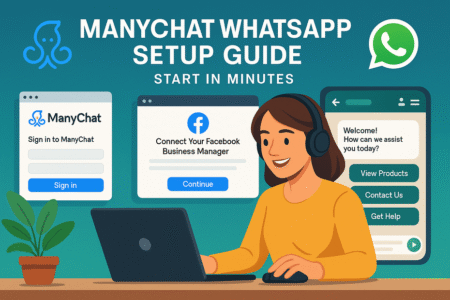Promote a business: Promoting a business is pivotal, but how does one start? What strategies ensure that your business not only garners attention but retains it? Navigating the maze of marketing strategies can be daunting, yet, with the right approach, incredibly rewarding.
This introduction aims to demystify the process, setting you on a path to success by highlighting key strategies and considerations for effectively promoting your business. My intention is to provide you with a blueprint that not only boosts visibility but also fosters meaningful connections with your audience.
Table of Contents
Unleash the Power of Digital Marketing to Promote a Business
Did you know that over 5.3 billion people are using the internet in 2024? This staggering number underscores the immense potential of digital marketing to promote a business. In the era where digital presence is not just an option but a necessity, understanding how to effectively leverage digital marketing tools is crucial for any business aiming to stand out.
From my point of view, embracing digital marketing is not just about broadening your reach; it’s about establishing a dynamic, interactive presence that resonates with your audience.
Digital marketing offers a diverse array of strategies to promote a business, each with its unique advantages. My recommendation for businesses is to start by identifying their goals and target audience. This step is essential as it informs which digital marketing channels will be most effective for your specific needs.
Whether it’s through content marketing, email campaigns, or online advertising, the key is to create a cohesive strategy that aligns with your brand values and speaks directly to your audience’s interests and needs. According to various studies, businesses that adopt a targeted digital marketing approach tend to see higher engagement rates and, ultimately, better conversion rates.
Moreover, the beauty of digital marketing lies in its ability to provide measurable results. From my perspective, this is invaluable as it allows businesses to continuously refine their strategies based on real data. Analytics and reporting tools offer insights into what works and what doesn’t, enabling businesses to optimize their marketing efforts for better performance.
I strongly believe that by embracing these tools and adopting a data-driven approach, businesses can significantly enhance their promotional efforts and achieve sustainable growth.
Mastering Social Media Platforms for Enhanced Visibility
Social media is a powerhouse for enhancing visibility. With billions of active users, platforms like Facebook, Instagram, and Twitter offer unparalleled opportunities to connect with potential customers. My advice to businesses is to craft engaging, relevant content that speaks to the interests and needs of their audience.
This could include informative posts, behind-the-scenes looks, or interactive polls and quizzes. From my point of view, social media is not just about broadcasting your message; it’s about fostering a community around your brand.
Consistency is key when it comes to social media. I recommend establishing a regular posting schedule to keep your audience engaged and informed. Furthermore, utilizing social media analytics tools can provide valuable insights into your audience’s behavior and preferences, allowing you to tailor your content more effectively.
According to industry experts, businesses that engage regularly with their audience and adapt their content strategy based on analytics are more likely to see an increase in their social media visibility.
Engagement is another critical factor in mastering social media. I would say that actively responding to comments, messages, and reviews not only builds trust but also encourages further interaction from your audience. This direct engagement contributes to a positive brand image and can significantly boost your visibility on these platforms.
From my experience, businesses that prioritize audience engagement tend to develop a more loyal following, which is instrumental in promoting a business in the digital age.
Leveraging SEO: A Golden Ticket to Organic Reach
SEO, or search engine optimization, is a fundamental component of digital marketing that cannot be overlooked. It’s the art and science of enhancing your online content so that it ranks higher in search engine results pages.
What if I told you that optimizing your website and content for search engines could increase your visibility exponentially without the direct cost of advertising? This is the power of SEO. From my perspective, it’s a golden ticket to organic reach.
To leverage SEO effectively, it’s crucial to understand the importance of keywords. These are the terms and phrases that potential customers use to search for products or services like yours.
I recommend conducting thorough keyword research to identify the terms that are most relevant to your business and audience. Incorporating these keywords naturally into your website content, blog posts, and metadata can significantly improve your search engine rankings.
However, SEO is not just about keywords. It also involves optimizing your website’s user experience (UX). Google’s algorithms favor websites that provide a positive UX, including fast loading times, mobile responsiveness, and intuitive navigation.
My advice is to regularly audit your website to ensure it meets these criteria. Furthermore, high-quality, engaging content is essential for good SEO. It seems to me that providing value to your visitors through informative and engaging content not only helps with search rankings but also establishes your brand as an authority in your field.
Elevate Your Brand with Creative Content Marketing
“Content is king.” This timeless phrase resonates more today than ever before. In the bustling digital marketplace, creative content marketing stands as a beacon for businesses aiming to elevate their brand above the competition. It’s not just about filling your website with text; it’s about crafting stories that resonate, educate, and engage your audience.
My intention here is to guide you through the pivotal role of content marketing in promoting a business, underlining the importance of creativity and quality in your content strategy.
Creative content marketing is an art that requires a deep understanding of your audience’s needs and interests. It’s about creating value beyond just selling a product or service. From my perspective, the key to successful content marketing lies in offering solutions, inspiration, and insights that enrich your audience’s lives or businesses.
This approach not only promotes your brand but also builds trust and loyalty among your customers. I strongly believe that when your content genuinely helps someone, you earn a fan, not just a customer.
Moreover, the diversity of content formats available today means there are endless possibilities to creatively showcase your brand. Whether it’s through infographics, blog posts, ebooks, or case studies, each format offers a unique way to tell your brand’s story.
My recommendation is to experiment with various types of content to discover what resonates most with your audience. According to the latest marketing insights, a mix of content types can significantly enhance engagement and reach, appealing to different preferences and learning styles.
Crafting Compelling Blogs That Captivate Audiences
Blogs are a powerful tool in the arsenal of content marketing, offering a platform to dive deeper into topics that matter to your audience. A well-crafted blog post can not only inform and educate but also entertain and inspire. It seems to me that the key to captivating an audience is to present information in a way that is accessible, engaging, and, most importantly, valuable.
My advice to businesses is to focus on creating content that addresses the questions and challenges their audience faces, thereby positioning themselves as industry experts.
To enhance the effectiveness of your blogs, incorporating SEO best practices is essential. This means strategically using keywords, optimizing your posts for search engines, and ensuring your content is shareable across social media platforms.
I would say that SEO is not just about improving visibility; it’s about making sure your content reaches the right audience at the right time. From my perspective, blogs that are optimized for both the reader and search engines tend to perform the best in terms of engagement and conversion rates.
Interactive elements can also significantly enrich your blog posts. I recommend integrating visuals, infographics, and videos to break up text and make your content more digestible. Interactive content not only holds the reader’s attention longer but also encourages them to engage with your brand on a deeper level.
According to recent studies, blog posts with multimedia elements receive more views and shares, underlining the importance of diversifying your content format to enhance engagement.
Video Marketing: A Visual Strategy to Engage and Inform
In today’s fast-paced digital world, video marketing has emerged as an indispensable strategy for businesses looking to engage and inform their audience. “A picture is worth a thousand words,” and in the case of video, I’d argue it’s worth even more.
Video marketing allows you to convey your message quickly and effectively, creating an emotional connection with your audience that text alone cannot achieve. My suggestion is to leverage video marketing to tell your brand’s story in a way that is both informative and captivating.
The versatility of video content is one of its greatest strengths. Whether it’s explainer videos, customer testimonials, or behind-the-scenes glimpses, video offers a variety of ways to showcase your products, services, and company culture.
From my point of view, this flexibility allows businesses to cater to different audience preferences, enhancing the overall impact of their content marketing strategy.
Most importantly, video content has a remarkable ability to increase conversions and sales. Videos can make complex information more understandable, help demonstrate product use, and build confidence in your brand.
I strongly believe that incorporating video into your content marketing strategy can significantly boost your promotional efforts, providing a tangible return on investment. According to industry reports, businesses that use video marketing see higher engagement rates, website traffic, and conversion rates compared to those that don’t, underscoring the effectiveness of this visual strategy.
Harness the Influence of Email Marketing Campaigns
It’s no secret that the digital marketing landscape is crowded, making it increasingly challenging to capture and retain the attention of your audience. Yet, amidst the plethora of options available, email marketing campaigns remain an undeniably powerful tool. When executed correctly, they can forge deep connections and drive significant engagement.
The key lies in understanding how to use email marketing not just as a means of promotion, but as a channel for building lasting relationships. My aim here is to delve into the strategies that make email marketing campaigns influential, emphasizing their capacity to personalize, engage, and convert.
Email marketing, despite predictions about its decline, continues to thrive because of its direct and personal approach. I believe that its success hinges on the ability to deliver relevant and valuable content directly to the inbox of your audience. This personal touch can transform a simple message into a powerful conduit of engagement.
According to recent studies, consumers who purchase products through email spend considerably more than those who do not receive email offers. My recommendation is to leverage this platform to share not only offers but also insights, updates, and stories that add value to your subscribers’ lives, thus enhancing the effectiveness of your promotional efforts.
Furthermore, the adaptability of email marketing allows businesses to reach their audience in a highly targeted manner. Segmenting your email list based on demographics, behavior, or purchase history enables you to tailor your messages to meet the specific needs and interests of different audience segments.
I would say that this personalized approach not only improves open and click-through rates but also significantly boosts conversion rates. From my perspective, the ability to customize your communication is what sets email marketing apart from other digital marketing channels.
Email Marketing Recommendations
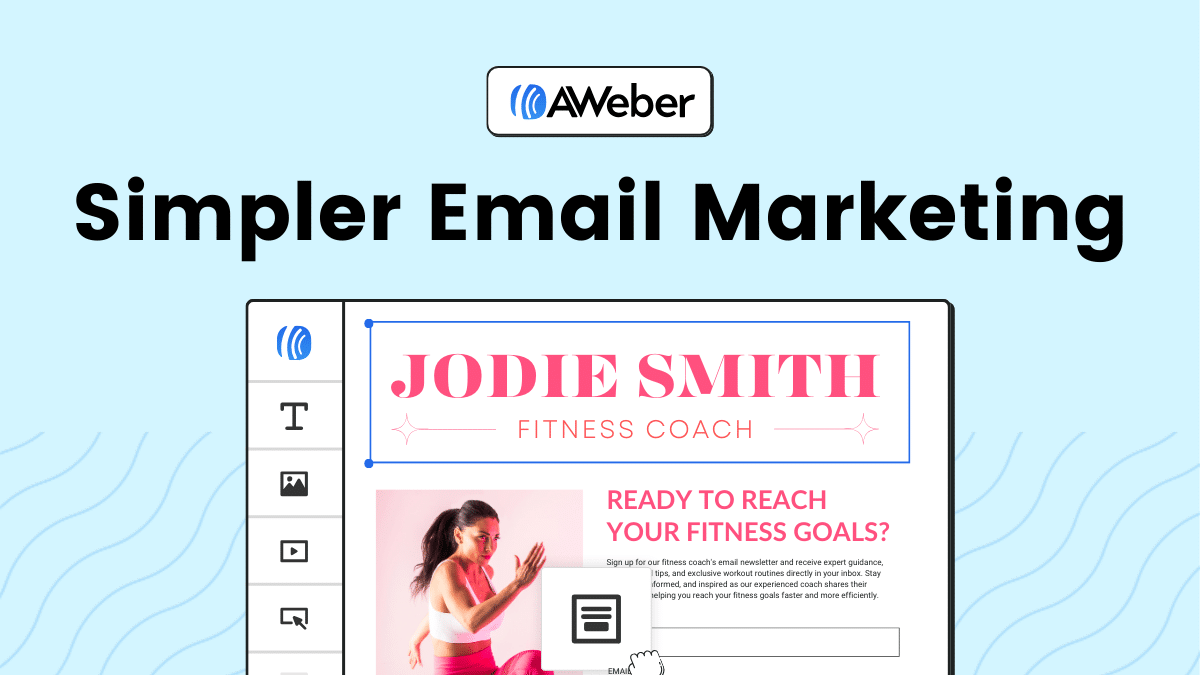 Aweber
| 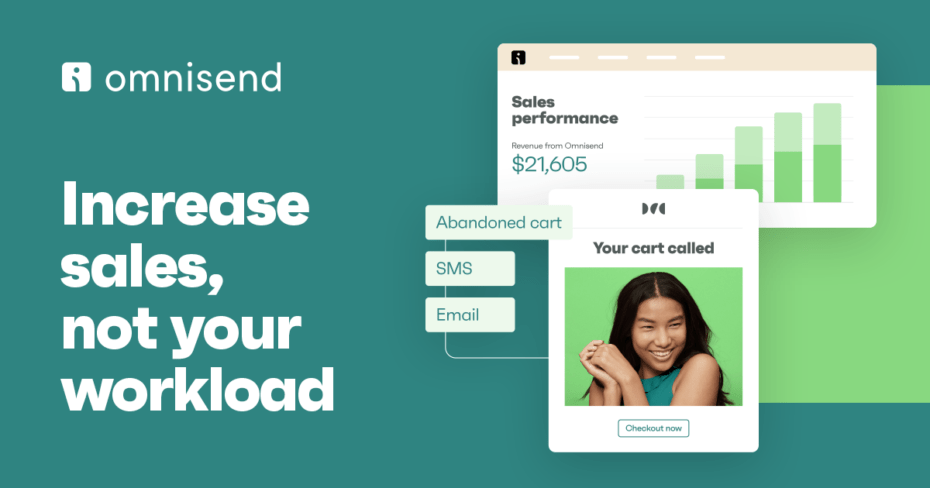 Omnisend
| 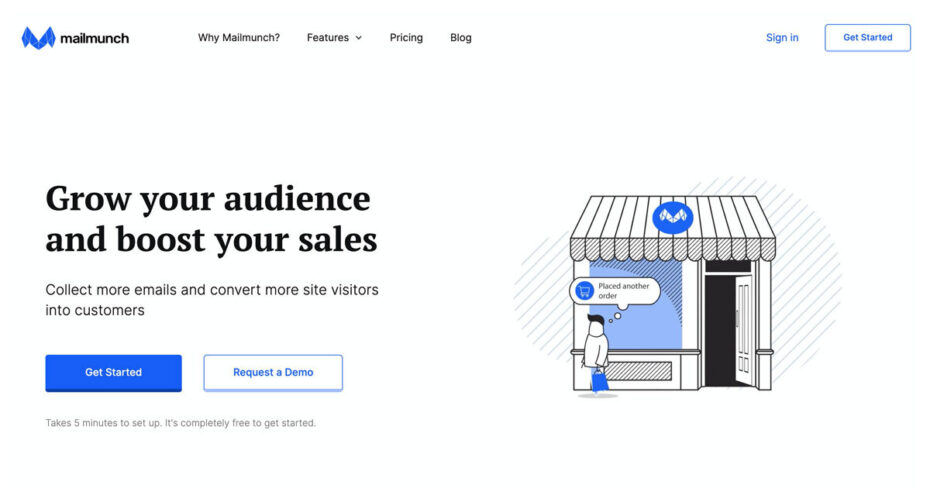 Mailmunch
|
Designing Newsletters That People Actually Want to Read
Crafting newsletters that capture and retain attention is an art. It begins with understanding that your subscribers have entrusted you with something valuable: their email address. In return, it’s your responsibility to honor that trust by delivering content that is not only relevant but also genuinely interesting.
I suggest starting with a compelling subject line that piques curiosity or promises value. This is your first, and perhaps only, chance to grab the reader’s attention.
Content is the heart of your newsletter. I recommend adopting a reader-centric approach by focusing on what your audience finds useful, entertaining, or enlightening. Whether it’s industry insights, tips, or company news, the content should be presented in a way that is easy to digest and visually appealing.
According to digital marketing experts, incorporating elements such as infographics, images, and videos can significantly enhance the appeal of your newsletter, making it more likely to be read and shared.
Personalization goes beyond just using the recipient’s name. It involves tailoring the content to meet the specific interests and needs of your subscribers. From my point of view, segmenting your audience allows you to customize your newsletters more effectively, thereby increasing engagement.
It would seem that personalized content not only reinforces the relationship with your audience but also drives better results, as it speaks directly to their preferences and behaviors.
Personalized Promotions: The Key to Customer Loyalty
In a market flooded with choices, personalized promotions stand out as a powerful strategy to foster customer loyalty. Recognizing and catering to the unique preferences of your customers not only demonstrates your commitment to their satisfaction but also significantly enhances the effectiveness of your promotional efforts.
I strongly believe that personalized promotions are more than just marketing tactics; they are a form of appreciation, showing your customers that you value them as individuals.
Leveraging data analytics for personalized promotions allows businesses to offer deals and recommendations that are genuinely relevant to each customer. This approach not only increases the likelihood of conversion but also strengthens the emotional bond between the brand and its customers.
In my estimation, the more tailored the promotion, the higher the appreciation and loyalty from the customer.
Finally, I would say that consistency in providing personalized experiences is crucial for building long-term customer loyalty. This means continuously analyzing customer data and feedback to refine your promotional strategies.
I recommend establishing a feedback loop where customers can share their preferences and experiences, enabling you to adjust your offers accordingly. From my perspective, this iterative process of personalization fosters a sense of belonging among customers, making them more likely to stay engaged with your brand over time.
Network Your Way to Success Through Events
Networking has always been a cornerstone of business success. In today’s digital age, the value of face-to-face interactions has not diminished; rather, it has evolved. Events, both virtual and in-person, offer unparalleled opportunities to promote a business, build meaningful relationships, and establish your brand as a leader in its industry.
From hosting webinars to participating in industry conferences, these platforms allow businesses to showcase their expertise, connect with peers, and engage with potential customers in a dynamic environment. My intention is to highlight how effectively leveraging these events can significantly contribute to your business’s growth and visibility.
The power of events in promoting a business lies in their ability to facilitate direct engagement. I believe that through careful planning and execution, events can serve as a catalyst for forming strategic partnerships and generating leads.
Moreover, they provide a unique platform for businesses to demonstrate their value proposition in real-time, allowing for immediate feedback and interaction. From my perspective, the key is to approach these opportunities with a clear strategy, focusing on how to best convey your brand’s message and values to an engaged audience.
Additionally, events offer a chance to gather invaluable insights about the industry and market trends. Participating actively in discussions, panels, and workshops not only enhances your business’s visibility but also enriches your understanding of the competitive landscape. I would say that this knowledge is crucial for adapting and innovating your offerings to meet the evolving needs of your customers. According to my estimation, businesses that are visible and active in the industry event circuit are often perceived as more credible and trustworthy by both peers and customers.
Hosting Impactful Webinars That Showcase Expertise
Webinars have become a powerful tool to promote a business and establish thought leadership. By hosting webinars, you can demonstrate your expertise on relevant topics, offering valuable insights and solutions to your audience.
My advice is to focus on delivering content that addresses the specific needs and challenges of your target audience, thereby creating a more engaging and impactful experience. It seems to me that the more your webinars can solve real problems for your audience, the more they will view your business as a trusted resource.
To maximize the impact of your webinars, I recommend promoting them through your business’s social media channels, email newsletters, and website. This ensures that your event reaches a wide audience, including both existing customers and potential leads.
Furthermore, engaging with participants during and after the webinar is crucial for building relationships. I would suggest incorporating Q&A sessions, polls, and follow-up communications to keep the conversation going and to gather feedback for future events.
From my perspective, the content of your webinars should not only be informative but also easily accessible. Offering recordings of the sessions and related resources post-event can help extend the lifespan of your content, allowing you to continue to promote your business long after the webinar has concluded.
According to my estimation, this approach not only amplifies your reach but also reinforces your position as an industry expert.
Participate in Industry Conferences for Broader Exposure
Industry conferences offer a unique opportunity for businesses to gain broader exposure and connect with key players in their sector. By participating in these events, either as attendees, speakers, or exhibitors, you can showcase your business to a targeted audience.
My recommendation is to carefully select conferences that align with your business goals and where your target audience is likely to be present. From my point of view, speaking at conferences is particularly effective as it positions you directly as an authority in your field.
Exhibiting at industry conferences is another excellent strategy to promote a business. It allows you to directly showcase your products or services and engage with potential customers.
I suggest designing your booth or presentation area to be inviting and interactive, encouraging attendees to stop by and learn more about what you offer. It seems to me that demonstrations or free samples can be especially effective in creating a memorable experience for attendees.
Lastly, networking is a fundamental aspect of participating in industry conferences. I strongly believe that the connections made during these events can lead to fruitful partnerships and opportunities.
My advice is to be proactive in initiating conversations, exchanging contact information, and following up after the conference. It would seem that consistent and genuine engagement is key to building lasting relationships that can significantly aid in promoting your business.
Utilize Paid Advertising for Immediate Impact
Just as a sprinter uses a burst of speed to gain an early advantage in a race, businesses can use paid advertising to quickly capture market attention and gain a competitive edge. Paid advertising stands out as a high-octane tool in the marketing arsenal, offering the speed and precision needed to promote a business effectively in today’s fast-paced digital landscape.
This approach, when executed thoughtfully, can catapult a brand into the spotlight, driving immediate traffic and conversions. My goal here is to explore how leveraging paid advertising can create significant impacts, ensuring your message reaches the right audience at the right time.
Paid advertising encompasses a wide range of formats, from search engine ads to display banners and social media ads, each with its unique advantages. Most importantly, these platforms offer advanced targeting options, allowing you to tailor your campaigns to specific demographics, interests, and behaviors.
This precision ensures that your advertising budget is spent efficiently, maximizing visibility among your ideal customer base. In my opinion, the ability to track and measure the performance of paid ads in real-time is one of its most compelling benefits, enabling businesses to adapt and optimize their strategies for the best possible outcomes.
Furthermore, the scalability of paid advertising is a crucial factor for businesses aiming to grow. As you begin to see positive results, you can gradually increase your ad spend to amplify your reach and impact.
I would say that starting with a smaller budget allows you to test different messages and channels to see what works best for your audience. From my perspective, this data-driven approach to scaling ensures that your advertising efforts remain cost-effective, even as you expand your reach.
Demystifying PPC: Strategies for Maximum ROI
Pay-per-click (PPC) advertising is often shrouded in complexity, but at its core, it’s about connecting with your audience at the moment they are searching for what you offer. Effective PPC campaigns require a careful balance of keywords, ad copy, and landing page optimization to ensure that every click has the potential to convert.
My recommendation for businesses new to PPC is to focus on long-tail keywords that are less competitive but highly relevant to your specific offerings. This strategy can lead to lower costs per click and higher conversion rates, as you’re targeting users with a specific intent.
Optimizing your landing pages is equally important as selecting the right keywords. I would say that your landing page should reflect the promise made in your ad copy, providing a seamless experience that encourages conversion.
This means clear, compelling calls to action, concise messaging, and fast-loading pages. From my experience, businesses that invest in landing page optimization often see a significant improvement in their ROI from PPC campaigns.
Finally, continuously monitoring and adjusting your campaigns is crucial for maximizing their effectiveness. This includes refining your keyword list, experimenting with different ad formats, and adjusting bids to stay competitive.
It seems to me that the most successful PPC campaigns are those that evolve based on data-driven insights. My advice is to leverage analytics tools to understand user behavior and campaign performance, allowing you to make informed decisions that enhance your ROI over time.
Social Media Ads: Targeting Your Ideal Customer Base
Social media platforms offer a goldmine of targeting options, from basic demographics to intricate interests and behaviors, making them an ideal space to promote a business to a highly specific audience.
What if I told you that you could pinpoint your advertising to reach individuals who have shown interest in products or services similar to yours? This level of targeting precision is what makes social media ads an invaluable tool for businesses looking to connect with their ideal customer base.
Creating engaging ad content that resonates with your audience is key to the success of your social media campaigns. I recommend using high-quality visuals, compelling narratives, and clear, actionable messages to capture attention and drive action. From my perspective, ads that tell a story or address a common pain point are more likely to engage users and lead to conversions.
Furthermore, testing and learning are fundamental aspects of social media advertising. Running A/B tests on different aspects of your ads, such as images, headlines, and call-to-action buttons, can provide insights into what appeals most to your target audience.
I strongly believe that the businesses that adopt a test-and-learn approach are better positioned to refine their messaging and targeting, ultimately achieving a higher return on their investment in social media ads.
Foster Customer Relationships with Exceptional Service
In the vast sea of competition, the businesses that thrive are often the ones that understand the value of fostering strong customer relationships through exceptional service. It’s akin to cultivating a garden; it requires patience, dedication, and a genuine commitment to nurturing each individual plant—or in this case, customer—to see them flourish.
Promoting a business goes beyond just selling a product or service; it’s about creating an experience that resonates with customers on a personal level. My intention is to delve into the strategies that can transform good service into exceptional service, thereby not only retaining customers but turning them into advocates for your brand.
Exceptional customer service is built on understanding and anticipating the needs of your customers. It involves more than just reacting to issues; it’s about proactively seeking ways to enhance the customer experience at every touchpoint. This might mean personalizing communications, offering timely and helpful support, or going above and beyond to meet customer needs.
From my perspective, businesses that invest in understanding their customer’s journey and pain points can more effectively tailor their services to meet and exceed expectations, leading to increased customer loyalty and satisfaction.
Moreover, exceptional service is about consistency. It’s important that every interaction a customer has with your brand is positive and reinforces their decision to choose you over a competitor. This consistency builds trust and reliability, key components of a strong customer relationship.
According to my estimation, businesses that ensure uniform excellence in service across all channels are more likely to promote a positive brand image and foster lasting customer relationships. In my opinion, training your team to deliver consistently high service standards is an investment in the future of your business.
Encourage Reviews and Testimonials for Social Proof
In today’s digital age, social proof is a powerful tool to promote a business. Encouraging satisfied customers to share their experiences through reviews and testimonials can significantly enhance your brand’s credibility and attract new customers. From my point of view, it seems that people trust the opinions of others, even if they are strangers, almost as much as they trust their personal network.
My advice is to actively encourage customers to leave feedback on your website, social media platforms, and third-party review sites. This not only showcases your commitment to transparency but also provides valuable insights into what you’re doing right and areas where you could improve.
To make the process easier for your customers, I recommend providing simple, direct links to review platforms and perhaps incentivizing feedback with discounts or special offers on future purchases. It’s important to respond to reviews, both positive and negative, in a way that shows you value customer feedback and are committed to continuous improvement.
My suggestion is to view every review as an opportunity to enhance your brand’s reputation and customer relationships. Speaking personally, I strongly believe that businesses that embrace customer feedback are better positioned to adapt, innovate, and grow.
After-Sale Service: Turning Buyers into Brand Ambassadors
Exceptional after-sale service is a critical component of fostering customer loyalty and turning buyers into brand ambassadors. This phase of the customer journey is often overlooked, but in my estimation, it’s where the long-term value of a customer relationship is solidified.
Following up after a purchase to ensure customer satisfaction, offering support and maintenance services, and providing loyalty rewards are all strategies that can enhance the post-purchase experience. My recommendation is to see after-sale service not as an obligation but as an opportunity to further differentiate your brand and deepen customer relationships.
Creating a community around your brand is another effective way to promote customer loyalty and advocacy. This could involve exclusive membership programs, online forums, or customer events. From my perspective, such initiatives not only provide additional value to your customers but also foster a sense of belonging and community.
I believe that customers who feel connected to a brand are more likely to become its ambassadors, sharing their positive experiences with others and promoting your business through word-of-mouth.
frequently asked questions (FAQ)
What are the most effective ways to promote a business online?
Digital marketing, social media, SEO, content marketing, and email campaigns are highly effective. Each has unique advantages and can be tailored to specific business needs.
How can social media enhance business visibility?
Social media platforms offer a direct way to engage with potential customers through relevant, engaging content, regular posts, and active audience interaction.
Why is SEO important for business promotion?
SEO improves your website’s visibility on search engines, driving organic traffic and increasing the chances of attracting potential customers without direct advertising costs.
What role does content marketing play in promoting a business?
Content marketing builds brand authority and trust by providing valuable, informative, and engaging content that resonates with your target audience.
How can email marketing campaigns boost customer engagement?
Personalized email campaigns provide direct communication with your audience, offering relevant content, promotions, and updates that drive engagement and conversions.
What are the benefits of hosting webinars for business promotion?
Webinars showcase expertise, engage with potential customers in real-time, and provide valuable insights, helping to build trust and authority in your industry.
How can businesses leverage paid advertising effectively?
Paid advertising offers immediate visibility and precision targeting, ensuring your ads reach the right audience and drive traffic quickly, which can be scaled based on performance.
What strategies can improve customer loyalty post-purchase?
Exceptional after-sale service, personalized follow-ups, loyalty programs, and creating a sense of community around your brand can turn customers into repeat buyers and brand ambassadors.
How important are customer reviews and testimonials?
Reviews and testimonials build social proof and trust. Encouraging satisfied customers to share their positive experiences can attract new customers and enhance credibility.
What are the advantages of participating in industry conferences?
Industry conferences provide broader exposure, networking opportunities, and a platform to showcase your business, fostering strategic partnerships and generating leads.


